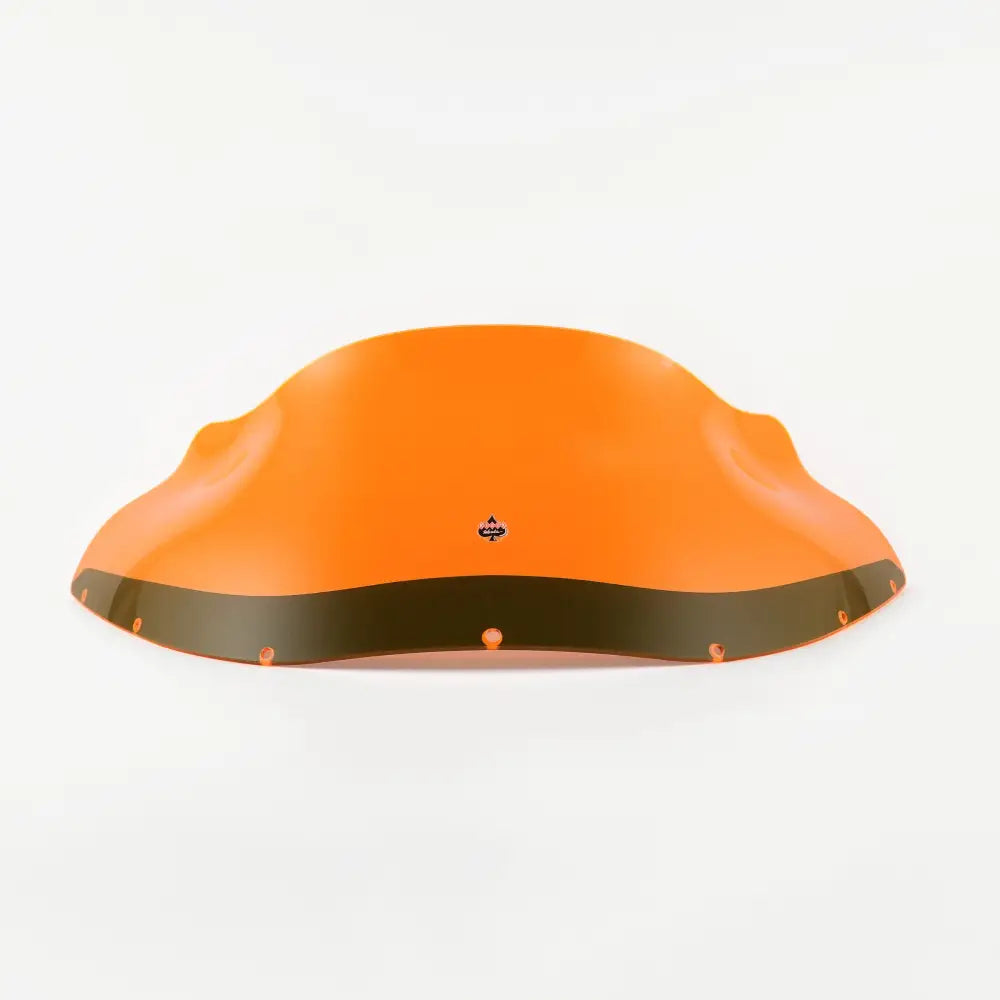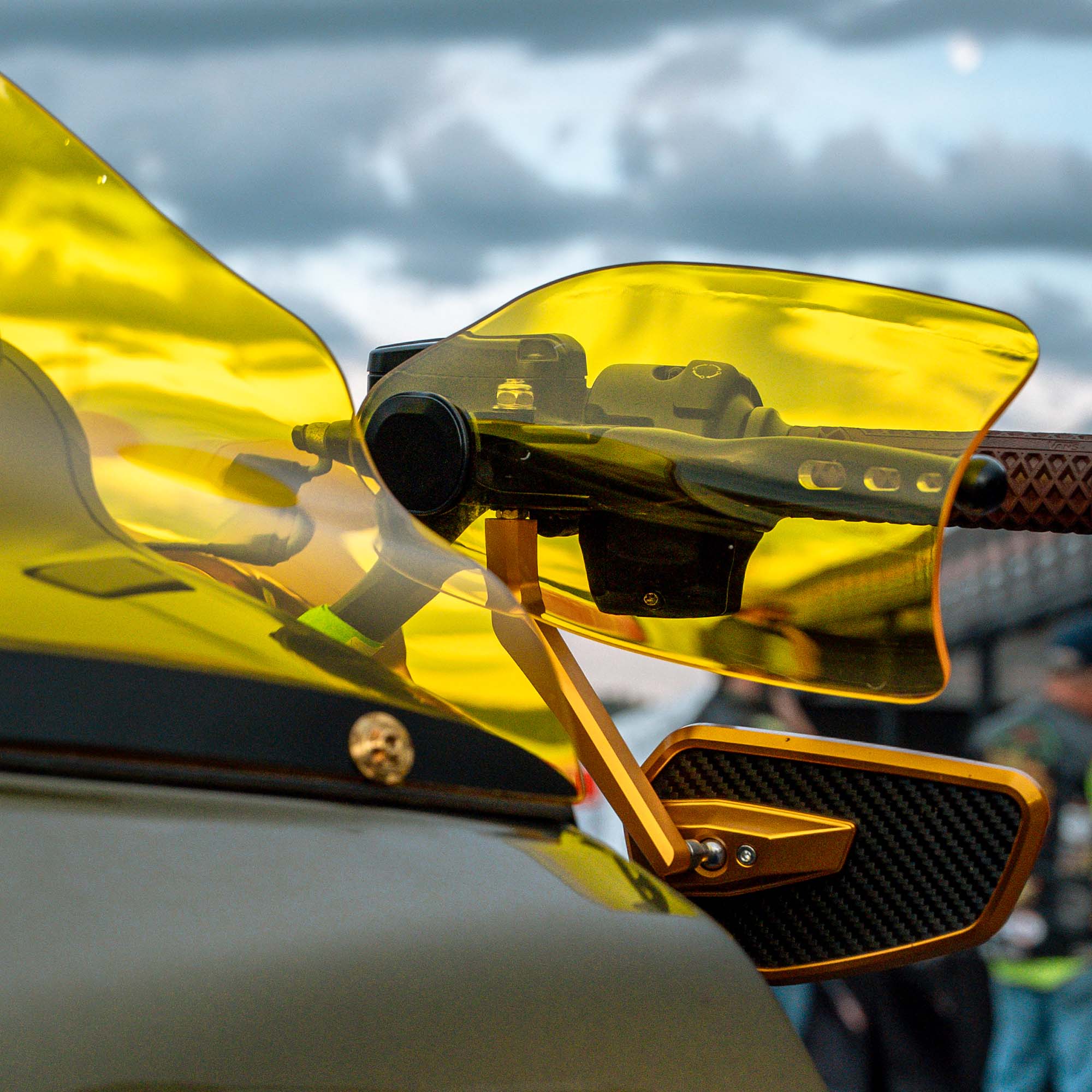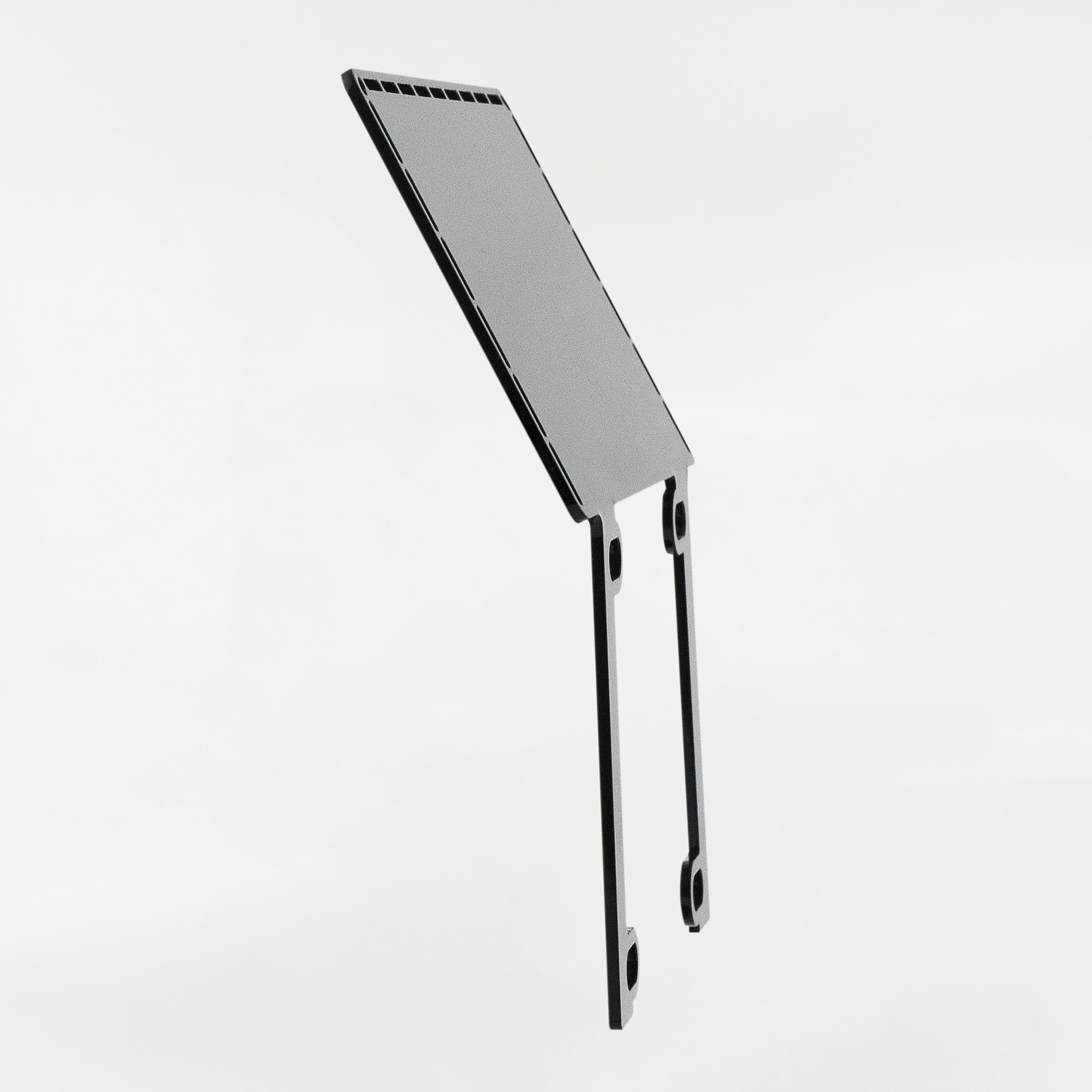The history of motorcycle fairings is deeply intertwined with the evolution of motorcycling itself. Fairings, which began as crude wind deflectors cobbled together by racers in the 1920s and 1930s, have transformed into essential components that enhance both performance and rider comfort.
Understanding their development helps highlight the significance of modern innovations, including Klock Werks' role in revolutionizing fairings with products like the Flare® Windshield.

Early Days of Fairings: 1920s-1930s
Motorcycle fairings originated in racing, where the need for speed drove competitors to seek any advantage in cutting down wind resistance. During the 1920s and 1930s, racers began experimenting with basic fairings made from metal, leather, or canvas.
These makeshift designs were the first attempts to streamline motorcycles, reducing drag and enabling higher top speeds. However, they were primitive at best and provided little protection or comfort for the rider.
1950s: The Rise of Commercial Fairings and the "Dustbin" Design
In the post-WWII era, motorcycle manufacturers began to realize the benefits of integrating fairings into commercial models. Companies like BMW and NSU were early adopters, introducing windshields and small fairings that provided better wind protection for touring motorcycles.
The 1950s also witnessed the emergence of the "dustbin" fairing in racing—a fully enclosed design that dramatically reduced drag by covering the front of the motorcycle, including the front wheel.

While these fairings significantly improved aerodynamics, they also made bikes unstable in crosswinds. Due to safety concerns, dustbin fairings were eventually banned from competitions like the Isle of Man TT, but their innovative approach paved the way for future aerodynamic advancements.

1960s-1970s: Widespread Adoption and the "Dolphin" Fairing
By the 1960s and 1970s, fairings became more commonplace, especially on touring bikes. In response to the banning of dustbin fairings, the "dolphin" fairing emerged, named for its radically curved shape resembling a dolphin's nose. This design offered improved aerodynamics without the stability issues of its predecessor.
Manufacturers such as Kawasaki and Honda also integrated partial and full fairings into production motorcycles. The Kawasaki Z1-R, released in 1978, was one of the first motorcycles to feature a full factory-installed fairing, signaling a shift toward fairings becoming a standard feature on high-performance bikes.

Wind tunnel testing became crucial in fairing development during this time, leading to more refined shapes that not only reduced drag but also improved airflow for engine cooling.
During this period, Harley-Davidson introduced the now-iconic Batwing fairing on their Electra Glide model, which became a defining feature of Harley's touring lineup. The Batwing was a fork-mounted fairing that dramatically improved wind protection for riders, especially on long-distance tours. Its introduction solidified Harley's presence in the fairing market, making the Batwing an essential part of their touring models' identity.

1980s-1990s: The Era of Full Fairings and Material Innovations
By the 1980s and 1990s full fairings became nearly standard on sport bikes and touring motorcycles. These fairings improved aerodynamics, reduced rider fatigue, and enhanced both speed and fuel efficiency.
Fairings also became a focal point for aesthetic design, with manufacturers refining shapes to create sleek, aggressive looks for sport bikes like the Suzuki GSX-R and Honda CBR series.
Harley-Davidson expanded their fairing lineup in the 1990s with the introduction of the Road Glide’s frame-mounted Sharknose fairing. This design provided better stability in crosswinds, particularly on long highway rides, and reduced rider fatigue. Unlike the fork-mounted Batwing, the Sharknose fairing was mounted directly to the bike's frame, allowing the front end to remain lighter and more maneuverable.

Advances in materials during this time—such as ABS plastic, fiberglass, and later carbon fiber—allowed for lighter, stronger, and more intricate fairing designs, revolutionizing modern motorcycle construction.

2000s-2010s: Technological Advancements and Customization
The early 2000s saw a boom in wind tunnel testing and the use of advanced materials like carbon fiber, leading to highly refined fairings designed for optimal aerodynamics. Customization also became a major trend, allowing riders to modify fairings for both performance and style. Common customizations included:
- Color-matching to the bike’s paint scheme.
- Custom shapes and cutouts for unique looks.
- Integrated audio systems with speakers mounted in the fairing.
- Storage compartments built into fairings for convenience.
- LED lighting for enhanced visibility.

This era marked a shift from fairings being essential for racing to becoming a true component of touring bikes, enhancing comfort, storage, and entertainment features.
The Role of Fairings in Modern Motorcycling
In today’s world, fairings are not only about performance—they also provide comfort, style, and protection. Touring bikes rely on larger, bulkier fairings to shield riders from wind, rain, and road debris, enhancing comfort on long journeys.
Sport bikes feature sleeker designs to optimize high-speed aerodynamics, allowing for better handling and increased stability. Different types of fairings—full, half, quarter, and belly pans—offer varying levels of protection and performance benefits, catering to the diverse needs of riders. Fairings have become an aesthetic signature, often defining the look and feel of a motorcycle.

Beyond the Fairing: The Klock Werks Flare® Windshield
Klock Werks' innovation in fairing design components is deeply rooted in racing as well. The company’s iconic Flare® Windshield was born out of a racing effort at the Bonneville Salt Flats in 2008, where stability and aerodynamics were crucial for record-setting runs. During these races, Klock Werks identified the need for better airflow management, leading to the creation of their patented Flare® design.
First developed for Harley-Davidson's Road Glide and Street Glide, the Flare® Windshield features a flipped-up tail and “hips” that redirect airflow, reducing buffeting and improving stability at high speeds. This innovation transformed long-distance touring by blending aerodynamics with comfort, redefining what a windshield and fairing could achieve.
The success of the Flare® Windshield turned Klock Werks into a household name in the aftermarket motorcycle world, blending performance, comfort, and visual appeal. By leveraging their racing experience and utilizing the fairing as a key component in their windshield designs, Klock Werks has revolutionized wind protection and comfort for touring riders.

Expanding Fairings for the Mid-Sized Cruiser Market
Within the past year, Klock Werks has further leveraged their expertise in fairing design by introducing in-house engineered fairings for the cruiser market. Recognizing the growing popularity of these smaller motorcycles, often referred to as "mid-sized cruisers", Klock Werks applied the same aerodynamic principles that made their Flare® Windshield a success to create FXRP-Style Fairings.
These fairings offer enhanced wind protection and comfort for riders while maintaining the bike’s agile profile. By offering cruiser riders the same quality and protection as larger touring bikes, Klock Werks continues to expand its influence in the motorcycle world.
The Importance of Fairings in Motorcycling Today
From their early days as rough windshields crafted by racers to the precision-engineered fairings of today, fairings have become an integral part of motorcycling. They offer more than just wind protection, they reduce drag, improve stability, and enhance the overall riding experience. For companies like Klock Werks, the fairing has become a canvas for innovation, shaping how motorcycles perform and look.
By utilizing fairings as a central feature in their Flare® Windshield design and expanding into the mid-sized cruiser market, Klock Werks continues to prove that fairings are not just a functional necessity but also a key to elevating both the performance and style of motorcycles.
































